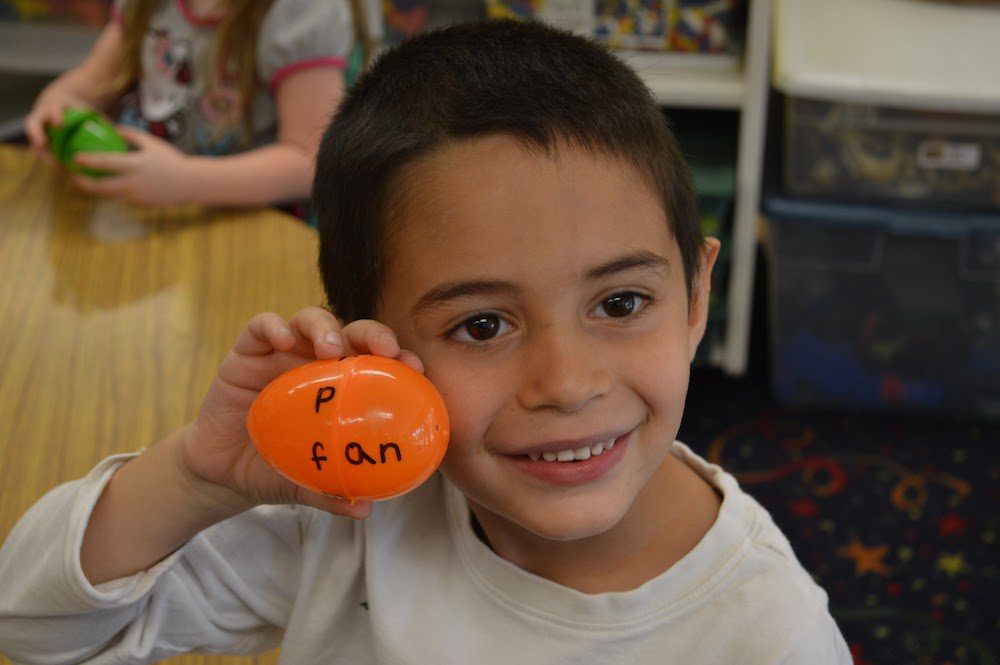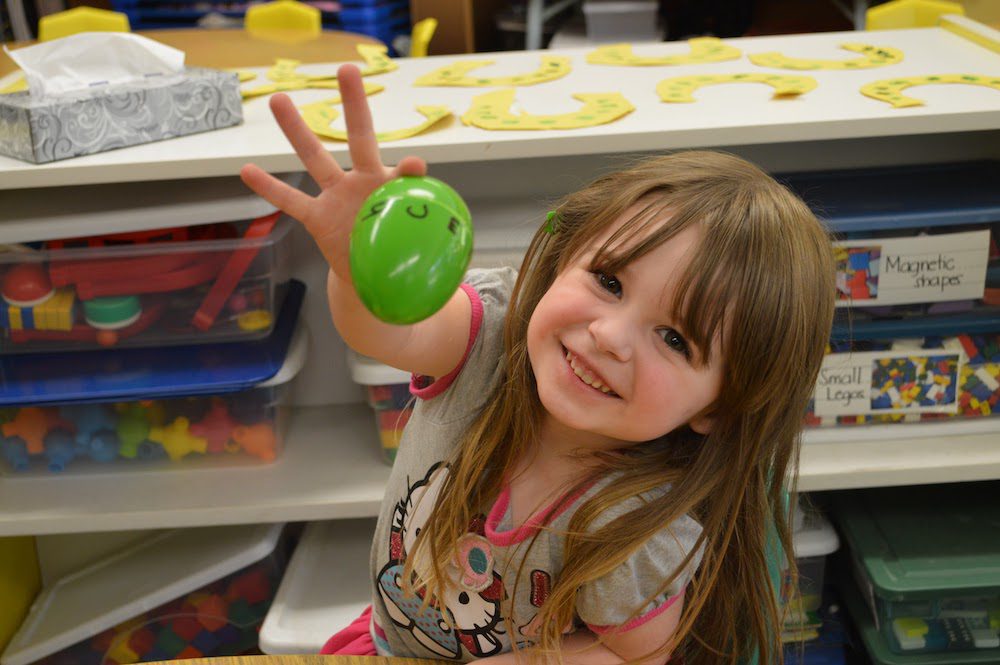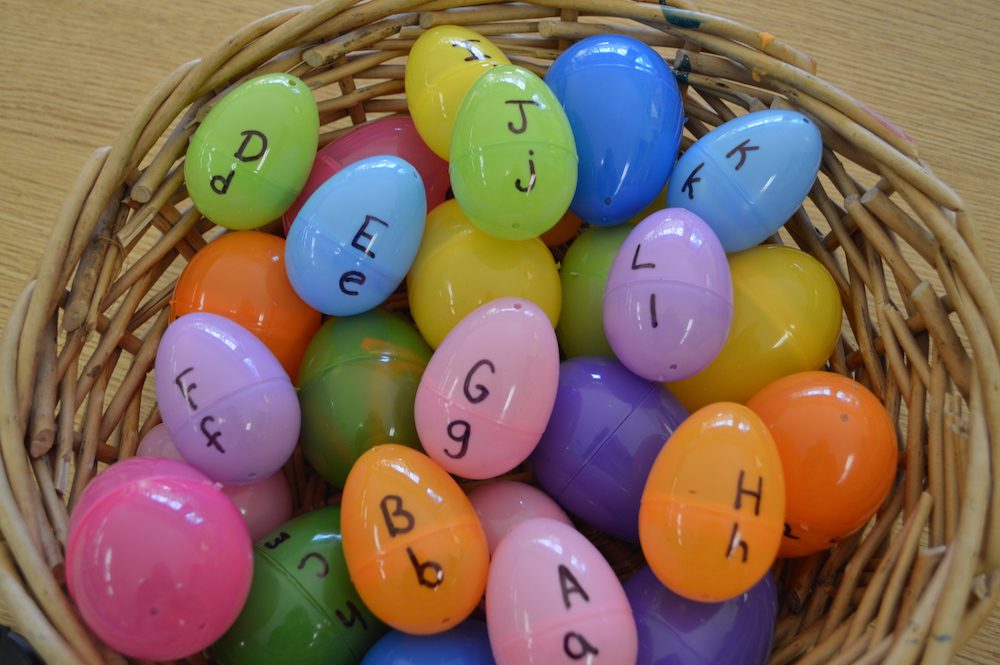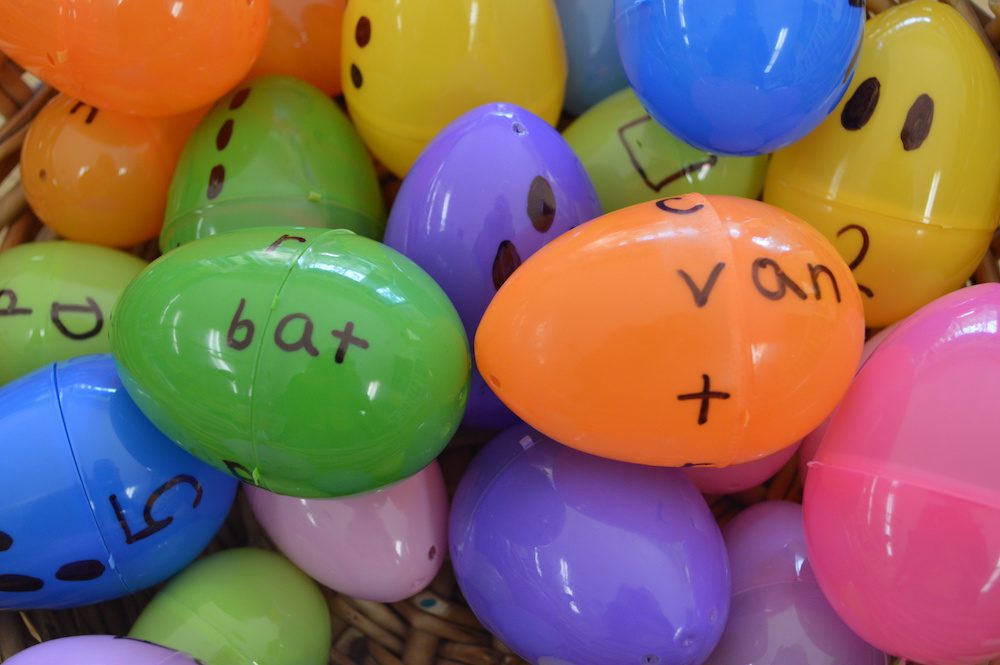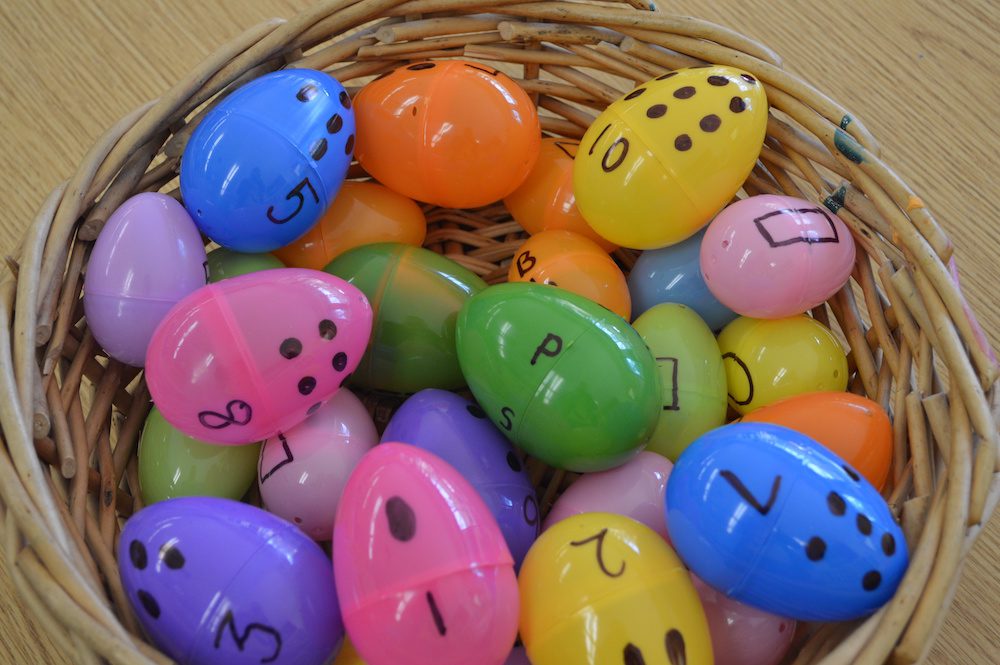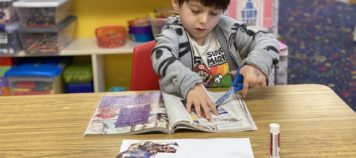Plastic eggs aren’t just for candy and treats. We can teach with them too.
Here are some ideas on how your preschooler can learn at home with Plastic Eggs. I know they work since we do them at school. Give them a try at home and tell us what you think.
You’ll need
- magic markers
- plastic eggs
Opposites
- Write one opposite on one side of an egg and one on the other. Repeat. Break apart all the eggs then have the children match the opposites.
- Write several opposites on one side of each egg. Then write one correct opposite and a few incorrect opposites on the other side. Children turn the egg to the correct opposite.
beginning/end; strong/weak; up/down; many/few; rainy/sunny; above/below; big/little; smooth/rough; high/low; left/right; front/back; long/short; cold/hot; soft/hard; cool/warm; frozen/melted; over/under; deep/shallow; tall/short; dry/wet; fine/grainy; heavy/light; dirty/clean; inside/outside; in/out; top/bottom; open/closed; awake/asleep; more/less; old/new; rotten/fresh; healthy/sick; sweet/sour; light/dark; night/day; bright/dull; off/on; push/pull; run/walk; full/empty; happy/sad; stand/sit; go/stop; right/wrong…
Math Readiness
- Counting – Draw dots on one half of an egg. On the other half, write (i.e. Four, 4) the number of dots you just drew on the other half. Separate the eggs then have the children match the correct number of dots with the correct written number.
- Number Recognition – Write a number on one side with a greater than > or less than < sign by it. Write all correct answers on the other side. Try it with incorrect answers too and find only the right answers. Try it with the equals sign too. i.e. 5=five. Rotate to correct answers.
- Addition & Subtraction – Write simple adding and subtracting problems on one side and answers on the other. i.e. 1+1=_2. Have children rotate eggs to correct answers. Make it harder – 1+2<_4 etc.
Letter Recognition & Reading Skills
- Write the beginning letters of simple words on one side of the plastic eggs and the ending part of the word on the other side (C_ AT) . Add additional correct begging letters and/or ending letters. Have the children rotate the top half of the egg to match the beginning letter with the ending letters and read the word together.
- AT words- cat, mat, sat, fat, rat, hat, bat & pat.
- AN words- man, can, fan, pan, ran, tan & van
- Write an uppercase letter on the top half of an egg and lower case of that same letter on the bottom half of the egg ( A_a). Separate the eggs and have children match the correct uppercase & lowercase letters.
Shapes
- Write a shape name on one side and draw shapes on the other side. Break up the eggs and have the children match the word to the picture.
- Draw half a shape on one side and half shapes on the other side. Have children rotate the eggs to complete the shape.
Colors
- Write the color name of an egg on one side. Repeat. Separate the eggs. Have children match the correct colors. Throw them a curve-write blue on a pink egg and have the children find the color that matches the word not the egg.
Emotions
- Draw eyes on one half. Mouth on the other. Have your child mix and match and describe the emotion. Or ask your child to pick the egg that shows how she is feeling right now.
- Draw several mouths on the bottom half and one set of eyes on the top. Have your child turn the eggs and describe the emotion.
- Make silly faces, sad faces, happy, angry…
These are just some of the ways to learn with eggs. There are many other variations and ideas. Children can count them, sort them, fill them, empty them, throw them, catch them… If you want more ideas, just ask.
- Happy Times November 2024 - October 29, 2024
- Ms. Tiffany - September 27, 2024
- Happy Times October 2024 - September 27, 2024

